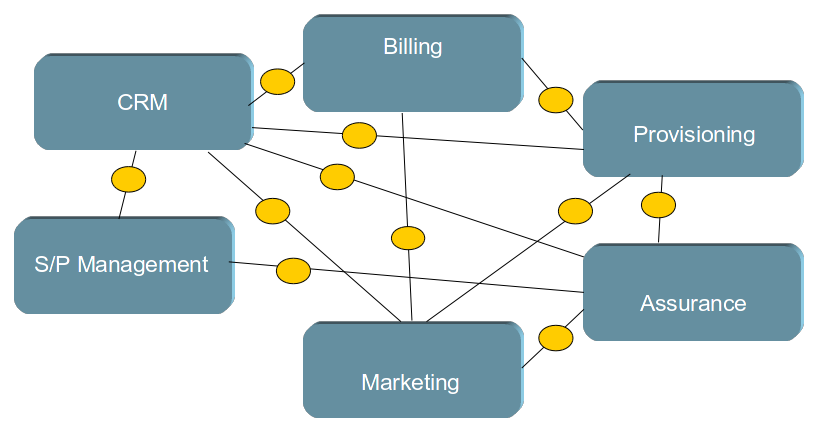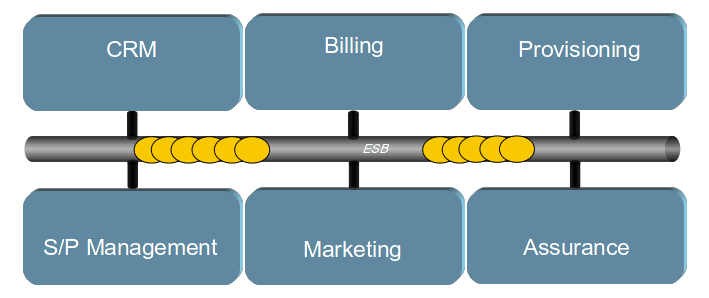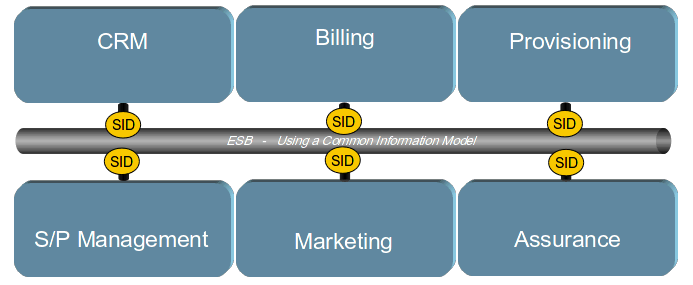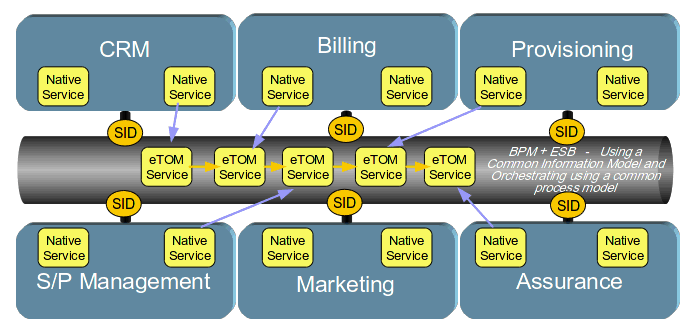Originally posted on 6Jun17 to IBM Developerworks (11,950 Views)
Think about it – orchestration is everywhere in a Telco – the Order to Cash process, The Ticket to Resolution process, the service and resource fulfilment process and even the NFV MANO processes. Orchestration is everywhere…
There is a hierarchy to processes in a Telco – just as the TMF recognises that there is a hierarchy in business services (within the eTOM Process Framework). At the highest level, the Order to Cash process might look like this:
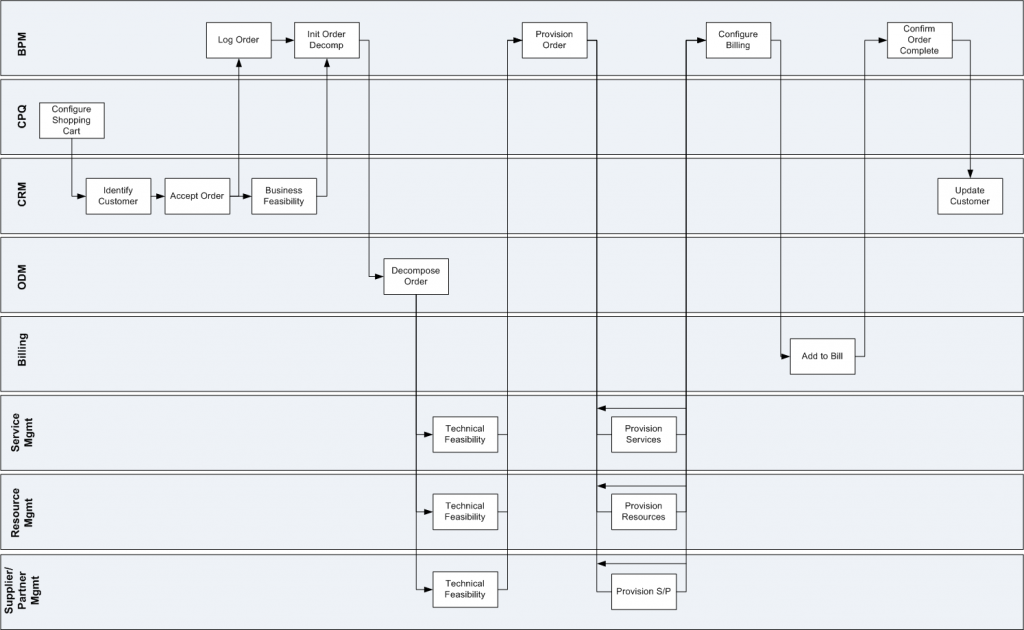
Each task in this swimlane diagram will have multiple sub-processes. If we delve down into the provision resources task for instance, a CSP will need processes that will interrogate the resource catalog and network inventory to determine where in the network that resource can be put and what characteristics need to be set, then tell the resource manager to provision that resource. If it’s a physical resource, that may involve allocating a technician to install the physical resource. If it’s a virtual resource such as a Virtual Network Function (VNF) then the Network Function Virtualisation (NFV) orchestration engine will need to be told to provision that VNF. If we go one level deeper, the NFV Orchestration engine will need to tell the NFV Manager to provision that VNF and then update the network inventory.
Perhaps the diagram below will help you to understand what i mean:
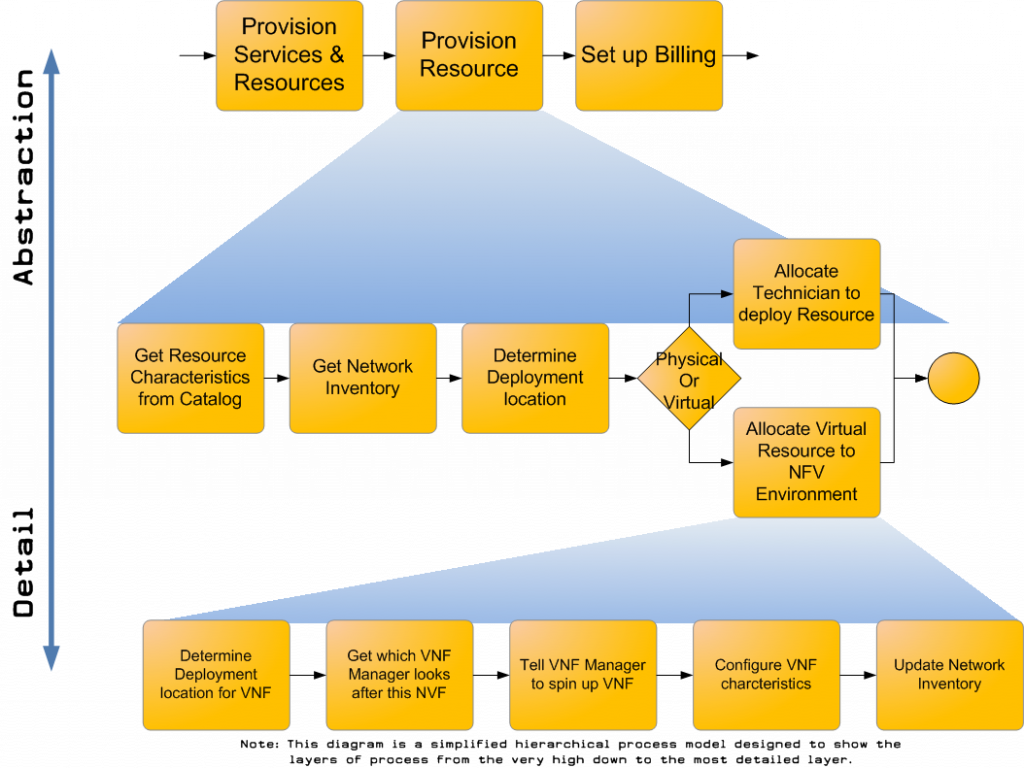
This diagram is a very simplified hierarchical process model designed to show the layers of process. As you can see, there are many layers of orchestration required in a CSP and as long as the orchestration engine is flexible enough and can handle the integration points with the many systems it needs to interact with, there is no real reason why the same orchestration engine couldn’t be used by all levels of process.
Over the past couple of years as NFV has risen significantly in popularity and interest, I’ve seen many players in the market talk about orchestration engines that just handle NFV orchestration and nothing else. To me, that seems like a waste. Why put in an orchestration engine that is just used for NFV when you also still need orchestration engines for the higher process layers as well? I’d suggest that a common orchestration and common integration capability makes the most sense delivering:
- High levels of reuse
- Maximising utilisation of software capabilities
- Common Admin and Development skills for all levels of process (be they business focussed or service or resource focussed)
- Common tooling
- Common Integration patterns (enabling developers and management staff to work across all layers of the business)
- Greater Business Agility – able to react to changing business and technical conditions faster
There are a number of Integration platforms – typically marketed as Enterprise Service Buses (ESB) that can handle integration through Web Services, XML/HTTP, File, CORBA/IIOP even Socket/RPC connections for those legacy systems that many telcos still have hanging around. An ESB can work well in a MicroServices environment too – so don’t think that just because you have a ESB, you’re fighting against MicroServices – you are not. MicroServices can make use of the ESB for connectivity to conventional Web Services (SOA) as well as legacy systems.
A common Orchestration layer would drive consistency in processes at all layers of a Telco – and there are a number of Business Process Management orchestration engines out there that have the flexibility to work with the Integration layer to orchestrate processes from the lowest level (such as within a Network Function Virtualisation (NFV) environment) all the way up to the highest levels of business process – the orchestrations should be defined in an standard language such as Business Process Execution Language (BPEL) or Business Process Model Notation (BPMN).
To me, it makes no sense to re-invent the wheel and have orchestration engines just for the NFV environment, different orchestration engines for the Service Order Management, the Resource Order Management, the Customer Order Management, the Service Assurance, the Billing, the Partner/Supplier management etc etc – all of these orchestration requirements could be handled by a single orchestration engine. Additionally, this would make disaster recovery simpler and faster and cheaper as well (fewer software components to be restored in a disaster situation).

